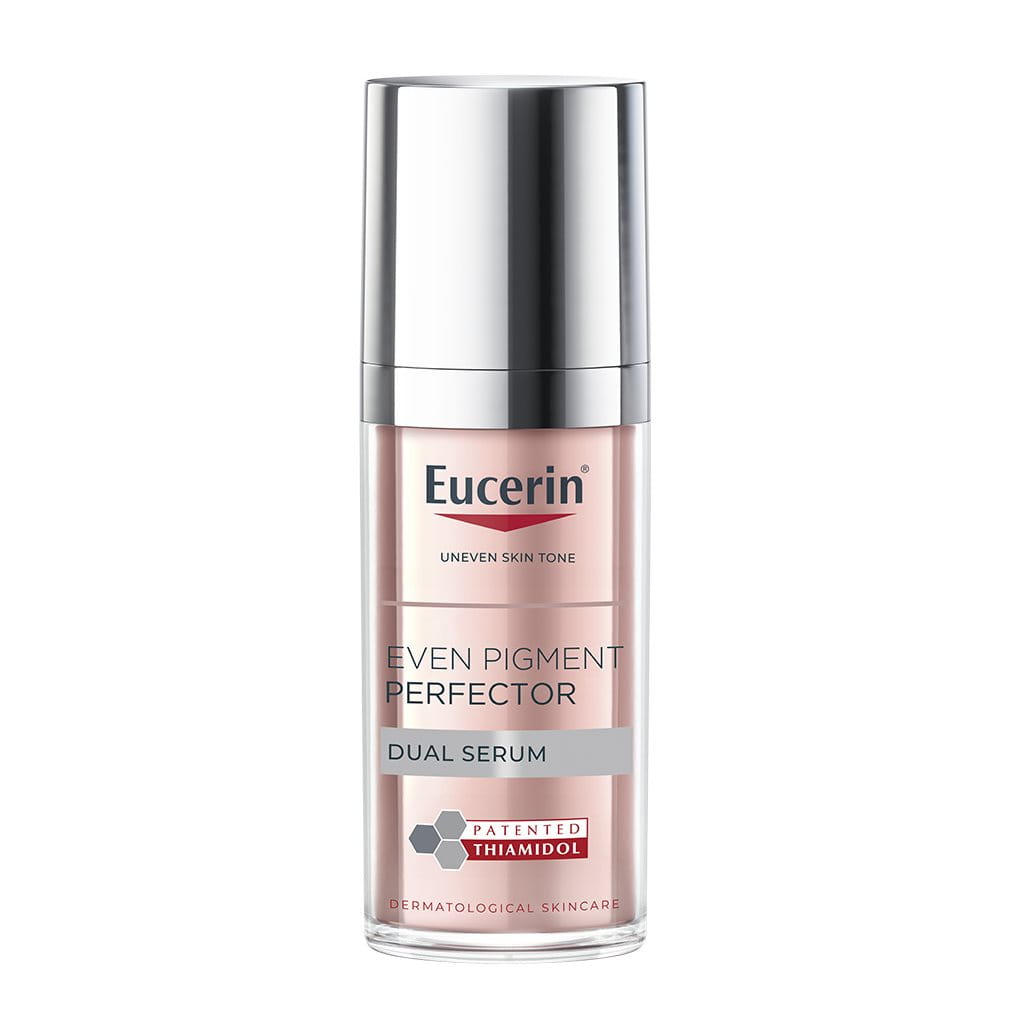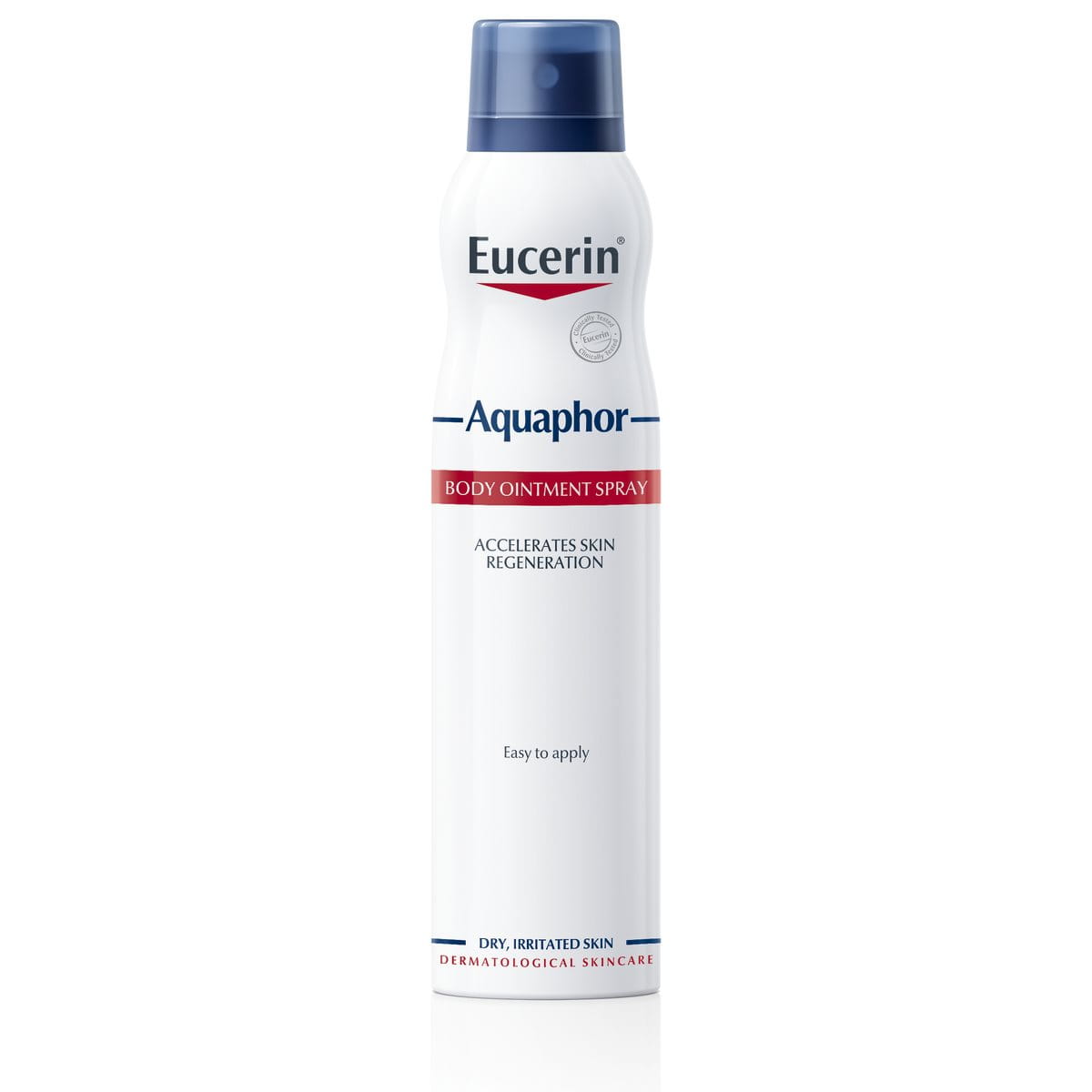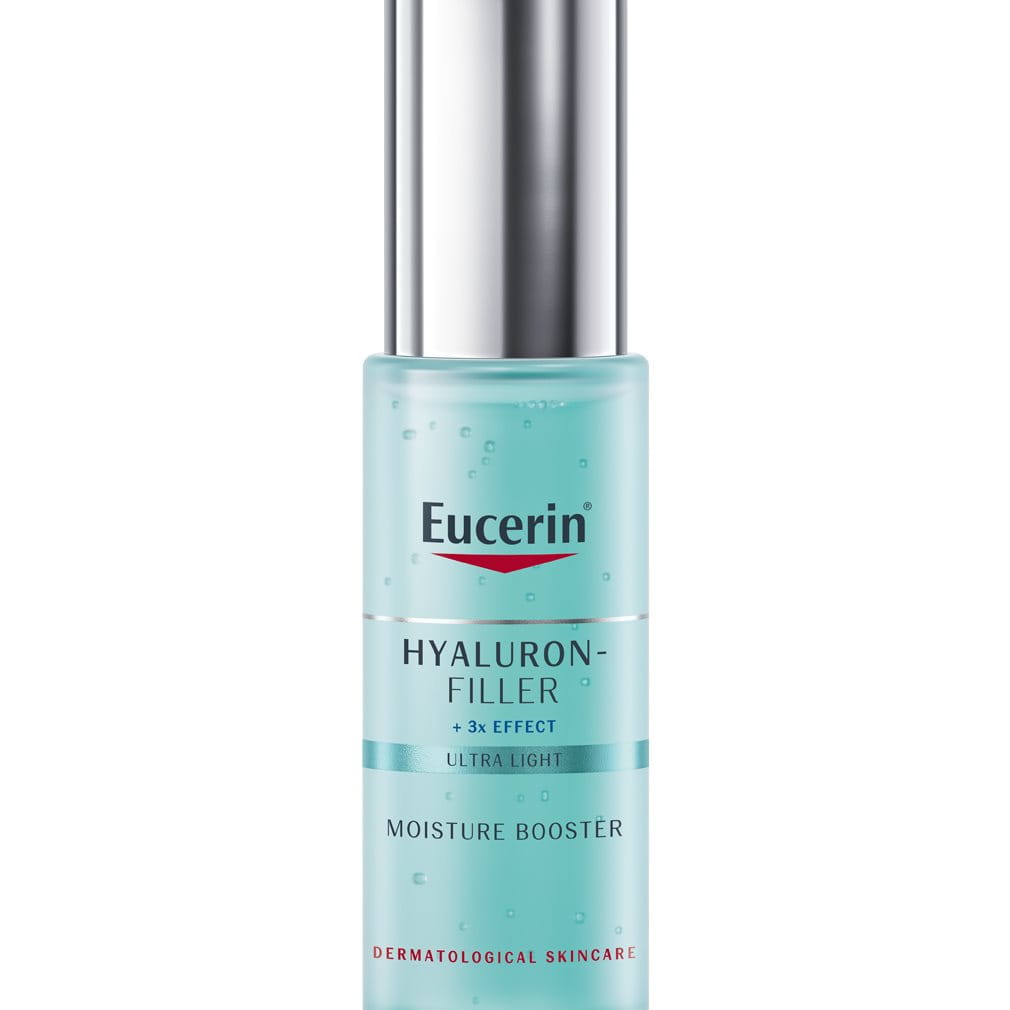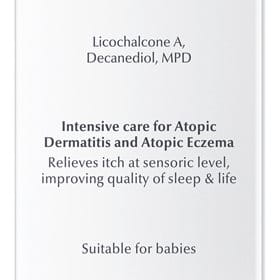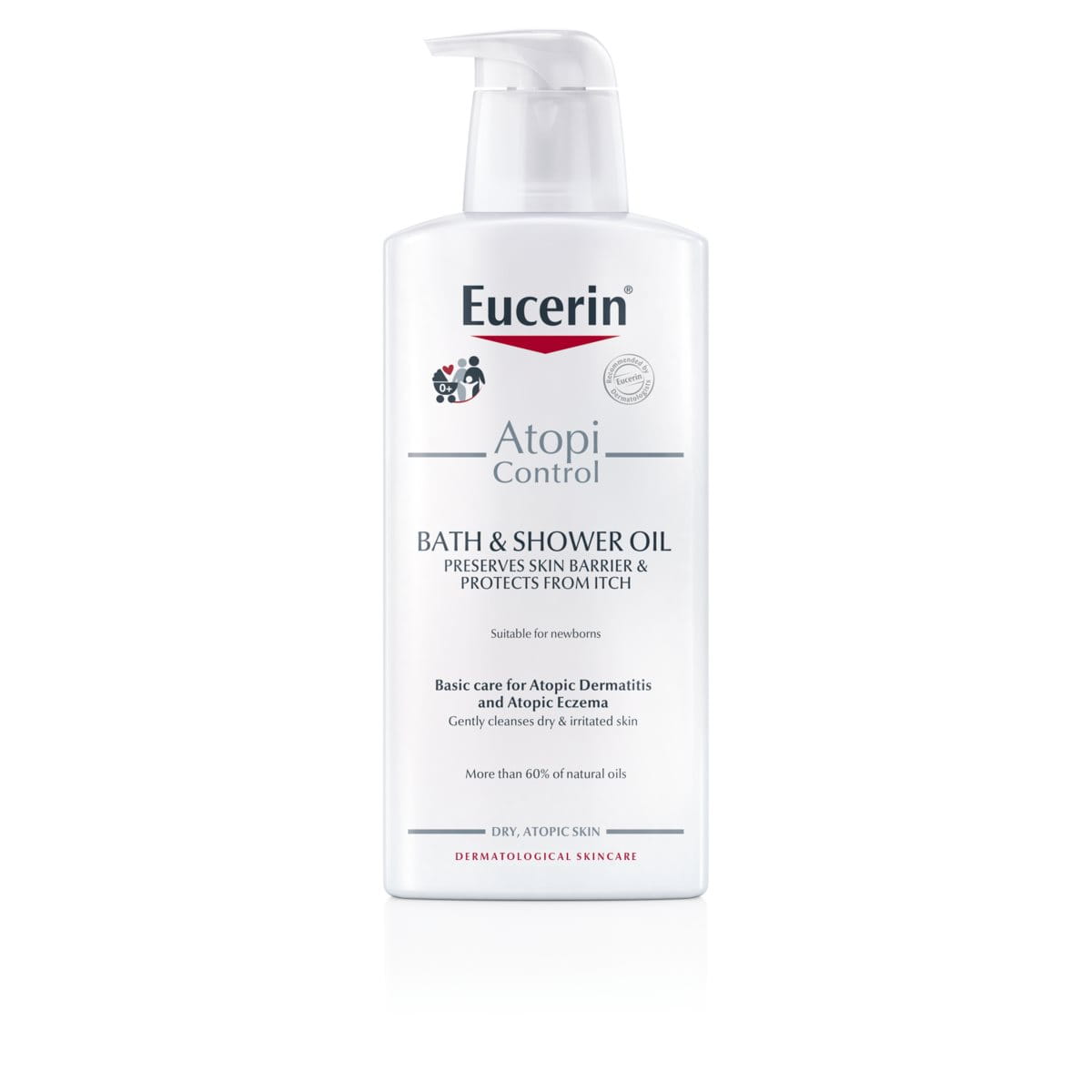Atopic Dermatitis is the most common skin disease in children, affecting approximately 15% to 20% of children1 2 3 4. The symptoms − dry, red, itchy and irritated skin − can be extremely uncomfortable for children and can cause considerable distress for parents and carers too.
This article looks at the how Atopic Dermatitis effects children and their families. It examines the symptoms, causes and triggers and looks at how skin care helps to alleviate symptoms and prolong the period between flare-ups.
How does Atopic Dermatitis effect children?
Children can develop Atopic Dermatitis at any stage. Many develop it when they are babies and most sufferers get the disease before they are five5. You can read more baby eczema in Atopic Dermatitis and babies.
Between the ages of two and puberty, Atopic Dermatitis normally appears as patches of dry, red and itchy skin on the neck, wrists, ankles, knee cavities, elbow folds and between the buttocks and the legs. Symptoms often persist for more than three months (the medical definition of a chronic disease) and skin in the inflamed areas can thicken and take on a leathery texture.
Atopic Dermatitis has two distinct phases:
- The acute phase when a child‘s skin flares-up and is at its most irritable. You can read more about this phase in Identifying and managing flare-up.
- The non-acute phase between flare-ups where skin looks and feels calmer. You can read more about this phase in Understanding Atopic Dermatitis
The acute phase is the most distressing. Your child may be in considerable discomfort, the itching can become so intense that they can’t sleep and the disease can have a considerable impact on their quality of life6. The disease can also impact on the quality of life of parents and caregivers who can feel hopeless, guilty and depressed. You can read more in How Atopic Dermatitis affects sleep and quality of life.
While most children grow out of Atopic Dermatitis by the time they reach puberty, it can persist into adulthood and research indicates that those who have Atopic Dermatitis as children can go on to develop other, related conditions such as asthma and allergic rhinitis 8.
If your child’s skin is bothering them, and you are in any way concerned about their symptoms, consult your doctor.
What causes and triggers infant Atopic Dermatitis?


Atopic Dermatitis is linked to a compromised skin barrier function and an immune disorder. Dermatologists have identified several causative and contributory factors:
Genetic disposition
There are two major risk factors for the development of Atopic Dermatitis: 1) a genetic defect in the Filaggrin (FLG) gene2,9 and 2) a family history of atopic disease2,10. You can find out about Filaggrin and how a deficiency affects skin in Understanding Atopic Dermatitis
There is also a proven link between Atopic Dermatitis and allergies. A family history of hay fever and/or asthma increases the probability of a baby experiencing Atopic Dermatitis.
Climate/pollution
Being born in a developed country, a cold climate or a polluted city seems to increase the risk of Atopic Dermatitis. Weather conditions may also trigger symptoms13.
Sensitivity to allergens
A compromised barrier function makes it easier for potential allergens such pollen, house dust and pet hair to irritate skin.
The role that food allergies play in Atopic Dermatitis is controversial2 but some people find that certain foods can make their child’s skin more sensitive and more prone to a flare-up.
Other external aggressors
Abrasive fabrics, harsh cleansers and the chemicals used in biological washing powders can all aggravate delicate young skin. Research has proven that passive smoking is especially harmful for young lungs14.
Scratching
The symptoms of Atopic Dermatitis can also trigger and/or exacerbate a flare-up. Because skin is dry and itchy, children scratch. This scratching damages skin’s protective barrier and a bacteria known as Staphylococcus Aureus is able to multiply and infect skin. This infection causes inflammation and itching which worsens the condition making skin even more irritable and itchy: a vicious circle known as the Atopic Skin Cycle. Find out more in Understanding Atopic Dermatitis.
How should I care for my child’s atopic skin?
The good news is that effective medical treatment and good skincare can alleviate much of the discomfort of a flare-up of Atopic Dermatitis and help to prolong the period between.
Children’s skin is thinner and has less pigmentation than adult skin. You can read more about the structure of young skin in Baby and children’s skin. It benefits from gentle phase-specific care:

- During the non-acute phase, it needs daily moisturisation to ease dryness and prolong the period between flare-ups
- During the acute, flare-up phase it needs medical and non-medical products to soothe and calm symptoms in addition to the usual daily moisturisation
The right moisturising products, and a regular and careful routine, play a key role in protecting and soothing your child’s atopic skin. You can find out about what products to use and an ideal routine to follow in caring for young atopic skin.
What else can I do to reduce flare-ups?


Try keeping a record of when your child’s skin flares-up and discuss it with your doctor. This will help to identify possible triggers and determine the best treatment. Everyone is different, but here are some of the things you can do to help reduce the impact of potential triggers:
Don’t smoke near your child
Passive smoking can worsen symptoms.
Choose gentle, skin-friendly fabrics
Cotton and linen are less abrasive than synthetic fabrics. Avoid scratchy wool. Wash new clothes to remove any chemicals that may have been part of the manufacturing process.
Food allergies
If you think that the food your child is eating is triggering their symptoms or making their Atopic Dermatitis worse consult your doctor before trying to eliminate any of those possible triggers. It’s important your child gets the calcium, calories and protein they need to grow and develop.
Reduce the potential damage that scratching can cause
The symptoms of Atopic Dermatitis can also trigger and exacerbate the condition. If your child’s skin is dry and itchy they are likely to scratch it. This scratching damages it further making it vulnerable to bacteria that can cause further itching.
This is known as the Atopic Skin Cycle and you can find out more about it in Understanding Atopic Dermatitis.
Scratching can also lead to skin becoming infected, so keep your child‘s nails trimmed. Cotton gloves (also known as scratch mitts), worn at night, can also help to prevent skin damage.
Sources
- New insights into the epidemiology of childhood atopic dermatitis. Flohr C, Mann J. Allergy. 2014 Jan; 69(1):3-16. Epub 2013 Nov 21.
- Overview of Atopic Dermatitis, Avena-Woods C, Am J Manag Care, 2017 June, Vol. 23, No. 8, Supplement S115-123
- Nutten S. Atopic dermatitis: global epidemiology and risk factors. Ann Nutr Metab. 2015; 66 (suppl 1):8-16. doi:10.1159/000370220.
- Eichenfield LF, Tom WL, Chamlin SL, et al. Guidelines of care for the management of atopic dermatitis: section 1. diagnosis and assessment of atopic dermatitis. J Am Acad Dermatol. 2014;70(2):338-351. doi: 10.1016/j.jaad.2013.10.010.
- Research statistics in Atopic Eczema: what disease is this? Kam-Lun Ellis Hon et al, Ital J Pediatr. 2012; 38:26
- Quality of life and childhood atopic dermatitis: the misery of living with childhood eczema. Lewis-Jones S. Int J Clin Pract. 2006 Aug; 60(8):984-92.
- Sleep disturbance in children with moderate/severe atopic dermatitis: A case-control study. Fishbein AB1, Mueller K2, Kruse L3, Boor P3, Sheldon S4, Zee P5, Paller AS2., J Am Acad Dermatol. 2018 Feb; 78(2):336-341. doi: 10.1016/j.jaad.2017.08.043. Epub 2017 Oct 28.
- Spergel JM. From atopic dermatitis to asthma: the atopic march. Ann Allergy Asthma Immunol. 2010; 105:99–106. doi: 10.1016/j.anai.2009.10.002.
- Sicherer SC, Leung DY. Advances in allergic skin disease, anaphylaxis, and hypersensitivity reactions to foods, drugs, and insects in 2008. J Allergy Clin Immunol. 2009; 123(2):319-327. doi: 10.1016/j. jaci.2008.12.025.
- Eichenfield LF, Tom WL, Chamlin SL, et al. Guidelines of care for the management of atopic dermatitis: section 1. diagnosis and assessment of atopic dermatitis. J Am Acad Dermatol. 2014; 70(2):338-351. doi: 10.1016/j.jaad.2013.10.010.
- Comprehensive analysis of the gene encoding filaggrin uncovers prevalent and rare mutations in ichthyosis vulgaris and atopic eczema. Sandilands et al. Nat Genet. 2007 May; 39(5):650-4.
- Genetics of atopic eczema. An update, Rodríguez1, Weidinger S., Hautarzt. 2015 Feb; 66(2):84-9. doi: 10.1007/s00105-014-3565-x.
- Suarez-Varela MM, Garcia-Marcos Alvarez L, Kogan MD, Gonzalez AL, Gimeno AM, Aguinaga Ontoso I et al. Climate and prevalence of atopic eczema in 6- to 7-year-old school children in Spain. ISAAC phase III. Int J Biometeorol 2008; 52:833–840.
- Parents' smoking habit and prevalence of atopic eczema in 6-7 and 13-14 year-old schoolchildren in Spain. ISAAC phase III. Morales Suárez-Varela M et al. Allergol Immunerpathol (Madr), 2008 Nov-Dc; 36(6): 336-42
Our brand values

We deliver a holistic dermo-cosmetic approach to protect your skin, keep it healthy and radiant.

For over 100 years, we have dedicated ourselves to researching and innovating in the field of skin science. We believe in creating active ingredients and soothing formulas with high tolerability that work to help you live your life better each day.

We work together with leading dermatologist and pharmacist partners around the world to create innovative and effective skincare products they can trust and recommend.
